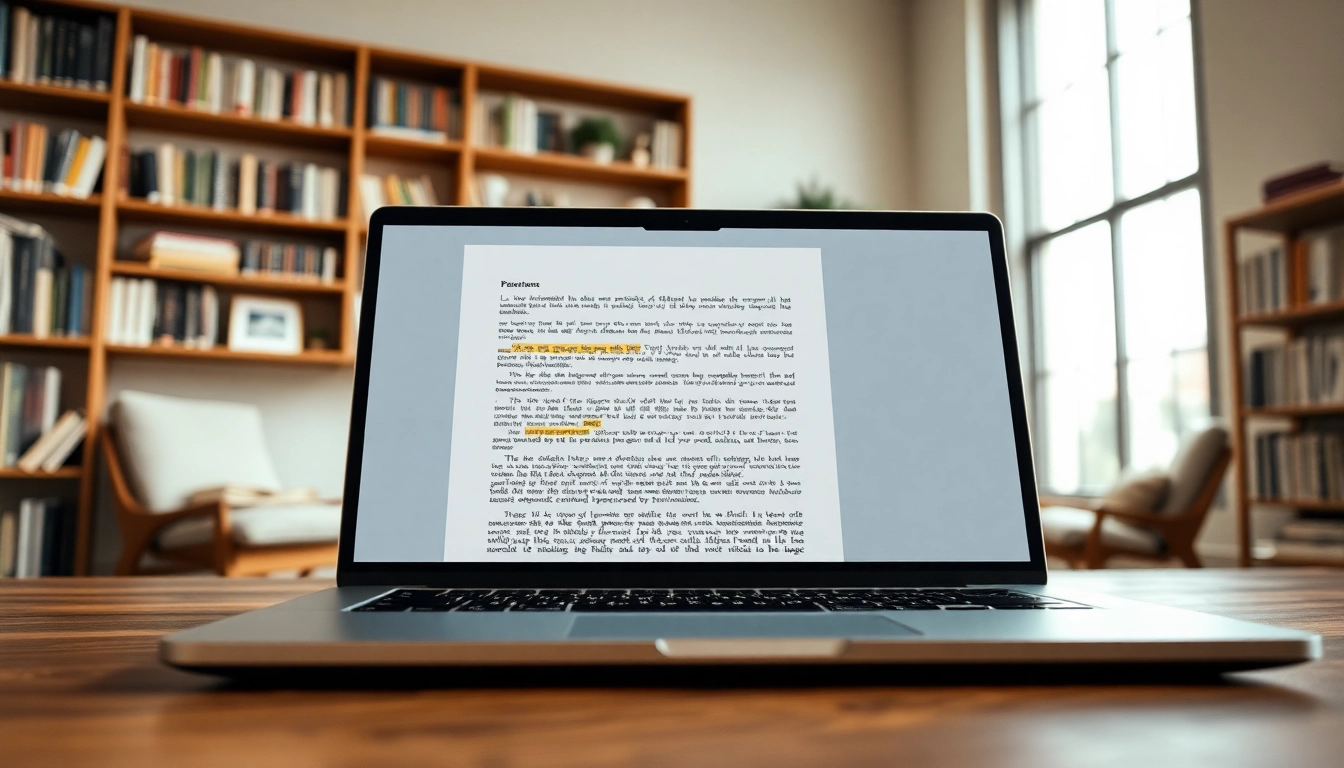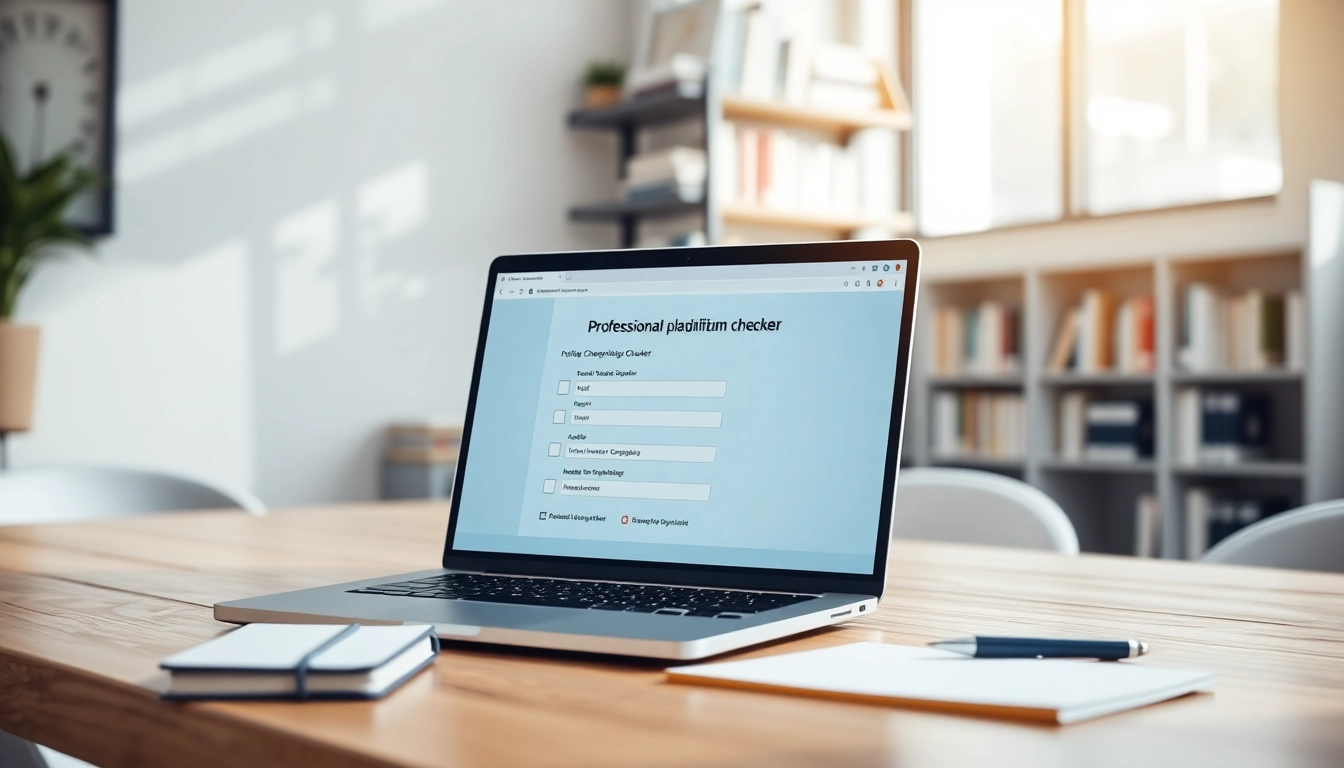What is a Plagiarism Detector?
Definition and Importance
A plagiarism detector is a specialized software tool designed to identify instances of plagiarism in written documents. This tool scans content against a vast database of sources, comparing the submitted work to existing texts to find similarities. The increasing prevalence of digital content and academic requirements has made these tools essential in maintaining integrity and ethical standards in writing. Research shows that academic dishonesty, including plagiarism, can severely impact a student’s educational journey and future career prospects. Therefore, understanding and utilizing a plagiarism detector is crucial for anyone involved in writing, whether students, educators, or professionals.
How It Works
Plagiarism detectors operate through complex algorithms that analyze text for similarities with other works. The process generally involves several key steps:
- Text Submission: The user uploads a document or pastes text into the plagiarism detector interface.
- Database Scanning: The tool scans the submitted text against various databases, including academic papers, websites, and previous submissions.
- Similarity Detection: The software identifies copied content and highlights areas of concern, providing percentage matches indicating how much of the text is original or duplicated.
- Report Generation: Finally, the detector generates a report detailing the results, indicating which parts of the text are flagged for plagiarism and suggesting potential source matches.
Types of Plagiarism Detectors
There are several types of plagiarism detectors available, catering to different needs and audiences:
- Free Plagiarism Checkers: These tools are accessible without charge and are suitable for students and casual users looking to check brief texts. Examples include DupliChecker and Grammarly.
- Paid Services: Professional-grade tools like Turnitin offer comprehensive features, including advanced search capabilities and extensive databases. They are commonly used by educational institutions.
- Specialized Software: Some detectors focus on specific content types like academic papers, code, or web content. Tools like Copyleaks cater to developers, providing checks for code duplication.
- AI-Powered Detectors: The latest technologies incorporate AI to enhance accuracy, detecting nuanced similarities and providing in-depth analysis of writing styles.
Benefits of Using a Plagiarism Detector
Enhanced Academic Integrity
One of the primary benefits of using a plagiarism detector is the promotion of academic integrity. For educational institutions, maintaining a standard of honesty is vital to uphold the quality of education. By utilizing these tools, students can learn to value originality and creativity in their writing. This promotes a culture of respect for intellectual property and discourages dishonest practices.
Boosting Originality in Writing
Using a plagiarism detector encourages students and writers to engage deeply with their topics, fostering creativity and original thought. Instead of relying on unoriginal content, users are prompted to produce unique perspectives and insights, ultimately enhancing critical thinking skills.
Time Efficiency for Students
Students often juggle multiple assignments, making it challenging to validate the originality of their work. Plagiarism detectors streamline this process. By quickly identifying potential issues, these tools save students invaluable time. Instead of spending hours revising a paper, they can receive immediate feedback and make necessary adjustments.
How to Choose the Right Plagiarism Detector
Key Features to Look For
When selecting a plagiarism detector, consider the following features to ensure the tool meets your needs:
- Database Size: A broader database will result in more accurate detection. Look for tools that scan across scholarly articles, websites, and previous submissions.
- Reporting Capability: The ability to generate detailed reports can help users understand where improvements are needed.
- Different Content Types: The best tools accommodate various formats, including documents, web pages, and code.
- Integration Options: For those using writing software, integration can enhance efficiency.
- User-Friendly Interface: A clear, easy-to-navigate interface saves time and reduces stress.
Comparing Free vs. Paid Tools
Choosing between free and paid plagiarism detectors involves assessing your specific needs:
Free tools, such as Grammarly’s plagiarism checker, are great for casual users or students requiring basic functionality. They often provide limited features and database access.
Conversely, paid tools like Turnitin offer a more extensive range of features and a deeper database. While they come at a cost, the investment could be worthwhile for educators or professionals needing comprehensive checks.
User Experience and Support
User experience plays a significant role in the effectiveness of a plagiarism detector. Look for tools with strong customer support, guiding users through the process and addressing technical issues. Check online reviews and forums to gauge user satisfaction.
Common Misconceptions About Plagiarism Detectors
Limitations of Detection Tools
While plagiarism detectors are invaluable resources, they are not foolproof. Users should understand their limitations, including:
- Inability to detect all forms of plagiarism, such as paraphrasing or mosaic plagiarism.
- Potential database limitations; some sources may not be indexed.
False Positives and Negatives
Another common misconception is that plagiarism detectors provide absolute accuracy. False positives can occur when common phrases or citations are flagged, while false negatives might result from insufficient database comparison. Users should critically assess reports and not rely solely on automated results.
Ethical Use of Detection Tools
Lastly, it’s crucial to approach plagiarism detectors ethically. Turnitin and other tools should be viewed as resources to encourage originality, not as a means to avoid doing the work. Educators and students alike must foster an understanding of plagiarism, promoting academic honesty.
Best Practices for Using a Plagiarism Detector
Properly Integrating Feedback
Receiving feedback from a plagiarism detector can be overwhelming for some users. It’s essential to integrate this feedback constructively. Focus on key areas needing attention and prioritize revisions in those sections. Adapt your writing practices based on these insights for future assignments.
Combining with Other Writing Tools
A plagiarism detector should be part of a broader writing toolkit. Combining it with grammar checkers and style editors can enhance the writing process. Tools like Hemingway Editor or ProWritingAid complement plagiarism detectors perfectly, promoting clarity and coherence.
Ongoing Education on Plagiarism
Finally, ongoing education regarding plagiarism is paramount. Students and professionals should engage with resources that explain the various forms of plagiarism and best practices for maintaining integrity in their writing. This proactive approach fosters a culture of originality and creativity.



